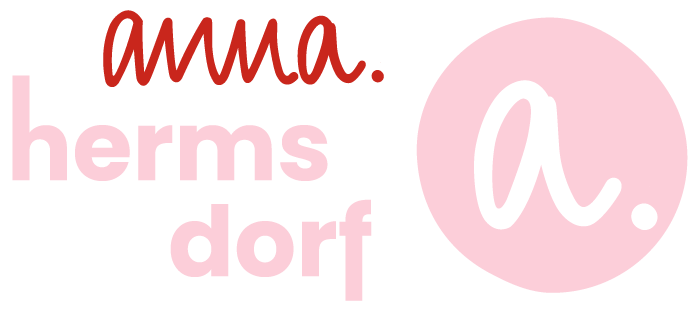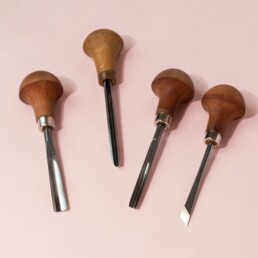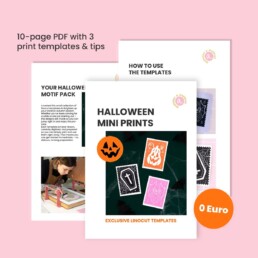Linocut beginner's set: These are the materials to get started
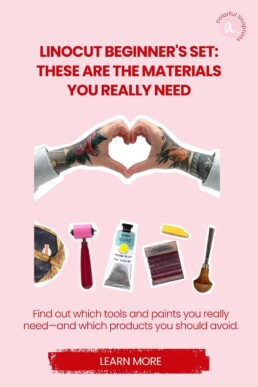
Month: October 2022
Perhaps the biggest hurdle for linocut print beginners is the choice of products and materials. You can easily put together your own set and I’ll tell you how! Learn which tools and paints you really need – and which products you should avoid.
I will help you understand linocut printing step by step, try it out for yourself, and create your own prints.
Once your interest in linocut is sparked, you probably want to stock up on all the necessary linocut materials, right? But where do you start? A quick Google search will show you countless beginner linocut kits – and at first, that looks super convenient.
However, many of these starter kits are filled with cheap, beginner-unfriendly products. Dull blades, old hard linoleum blocks, or ink that dries too quickly can quickly lead to frustration.
In the worst case, you grab one of these kits and lose interest before you even properly start printing.
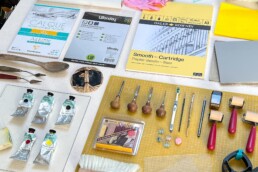
No time to read? Click here!
Why Cheap Linocut Kits Often Lead to Frustration
I don’t want to generalize about every product—but most affordable beginner linocut kits on the market are unfortunately low-quality.
If you’re serious about this hobby, it’s worth putting together your own linocut starter kit with high-quality linocut materials that will support you as you start.
And if you’re not sure whether you’ll really enjoy linocut: good materials can always be resold later. But if you buy a bad kit and don’t enjoy it, that money is truly lost.
Linocut for Beginners: What Do You Actually Need?
Start simple: draw your design on paper or directly on the linoleum block.
Tracing paper is perfect for transferring multi-layered designs or saving leftover ink.
Keep your design simple at first, and work in A5 format. Tip: buy your linoleum blocks online—you’re more likely to get fresh, soft linoleum. I’ve been using Essdee UK blocks for years.
To transfer your design onto the block, use carbon paper or charcoal paper. Just place it between your drawing and the linoleum, trace the lines, and voilà—your design is on the block.

Carving: The Heart of Your Linocut Starter Kit
To protect your workspace, a cutting mat or cardboard is enough.
The carving tools are essential for both fun and success: I recommend Pfeil tools—they cost around €16 each, but you really only need 3–4 sizes.
Using dull tools makes carving tedious and unsafe because it’s easy to slip.
My favorites:
-
Pfeil L 12/4 or L 11/0.5 for fine lines
-
L 9/5 for broader areas
-
L 7/10 or B7/14 for backgrounds
Additionally, get a sharpening set (e.g., from Flexcut) and a hand brush or wide brush to remove shavings. Bench clamps help secure your block to the table, making carving safer.
Printing Without a Press: It’s Easier Than You Think
You’ll need:
-
Paper (120–180 g, smooth, e.g., Design Offset White)
-
Two rollers (narrow + medium, Speedball Soft Rubber works best)
-
A palette or mixing surface (glass or plastic)
-
A palette knife for mixing
-
And of course, ink
💡 Tip: You don’t need a printing press! A Japanese baren and a wooden spoon are more than enough to achieve excellent prints.
The best results come from oil-based or water-soluble inks—I recommend Cranfield Caligo Safe Wash Relief Ink (green label). It dries slowly but cleans easily with water and soap.
For beginners, five colors are enough: white, black, magenta, yellow, and Prussian blue or Cyan.
For drying, hang your prints with clips on a drying rack. Oil-based inks take at least a day to dry.

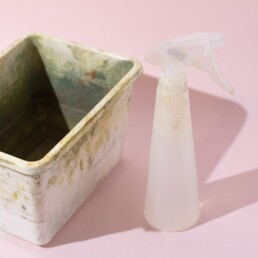
Cleaning Linocut Materials and Storing Ink
For cleaning, you need:
-
A small box of water
-
Sponge, soap, gloves, and old cloths
Never rinse your linoleum block under running water! This can distort the jute fibers and ruin your block.
You can store leftover ink on small pieces of tracing paper: cut a 10×10 cm square, scrape the ink onto it, fold, and seal with tape—your mini ink packet is ready!
Your Linocut Starter Kit at a Glance
That’s really all you need to get started!
With just a few high-quality linocut materials, you can assemble a beginner kit that motivates you rather than frustrates you.
👉 Download my free PDF with all the recommended products as a convenient shopping list.
👉 Or read here about why linocut can feel challenging at the beginning.
